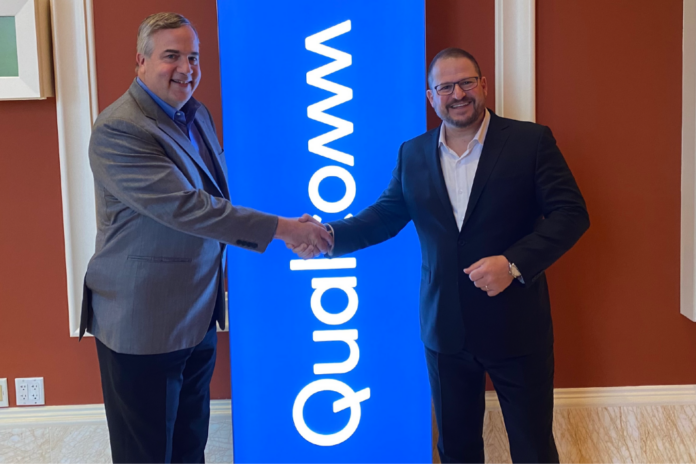The solution uses Snapdragon 5G Modem-RF Systems and Iridium satellite constellation’s weather-resistant L-band spectrum
Qualcomm’s Snapdragon Satellite, announced at CES 2023, is designed to provide global, two-way messaging capabilities for smartphones. The solution is supported by Snapdragon 5G Modem-RF Systems and weather-resilient L-band spectrum for uplink and downlink, provided by the Iridium satellite constellation, which has been fully operational since 2019.
“Iridium is proud to be the satellite network that supports Snapdragon Satellite for premium smartphones,” said Matt Desch, CEO of Iridium. “Our network is tailored for this service – our advanced, LEO satellites cover every part of the globe and support the lower-power, low-latency connections ideal for the satellite-powered services enabled by the industry-leading Snapdragon Satellite.”
“Snapdragon Satellite can expand to other devices, including laptops, tablets, vehicles and IoT,” said the company. “As the Snapdragon Satellite ecosystem grows, OEMs and app developers can differentiate and offer unique branded services taking advantage of satellite connectivity.”
Qualcomm added that the solution will also support 5G Non-Terrestrial Networks (NTN), as this infrastructure and constellations become available.
The satellite solution is also supported by Garmin’s satellite emergency response service. “Garmin welcomes the opportunity to expand our proven satellite emergency response services to millions of new smartphone users globally,” said Brad Trenkle, vice president of Garmin’s outdoor segment. “Garmin Response supports thousands of SOS incidents each year and has likely saved many lives in the process, and we are looking forward to collaborating with Qualcomm Technologies and Iridium to help people connect to emergency services no matter where life takes them.”
Space is very much the new frontier in mobile communications. In November, Apple announced the activation of its “Emergency SOS by satellite” feature for the iPhone 14 that uses the L and S-bands. The feature will enable iPhone 14 and iPhone 14 Pro users to connect with emergency services in areas without cellular and Wi-Fi coverage by guiding users to an outdoor location they can connect to Globalstar’s constellation of Low Earth Orbit (LEO) satellites. Then, the user is prompted to answer specific questions about their situation after which a message is sent to the satellite, relayed to Globalstar’s network of ground stations, and then dispatched to emergency services teams for further action.
A few months prior to Apple’s announcement, T-Mobile CEO and President Mike Sievert and SpaceX Chief Engineer Elon Musk revealed Coverage Above and Beyond, the company’s joint effort to bring cell phone connectivity everywhere using satellite technology.
“The important thing about this is that it means there are no dead zones anywhere in the world for your cell phone,” said Musk said at the live event.
Emergency messaging using Qualcomm’s Snapdragon Satellite will launch for next-gen smartphones in select regions beginning the second half of this year. Initially, only devices based on the flagship Snapdragon 8 Gen 2 Mobile Platform are compatible, said the company.

